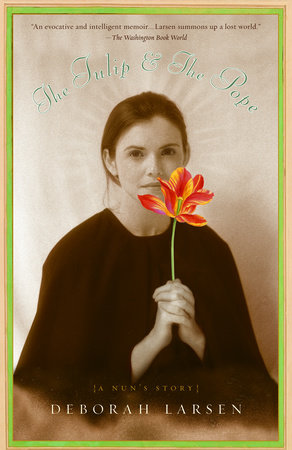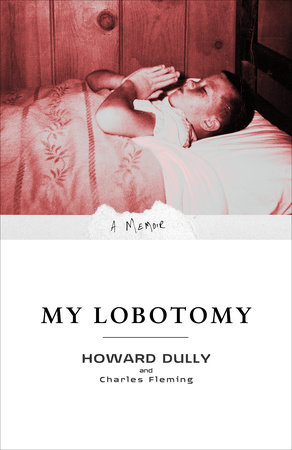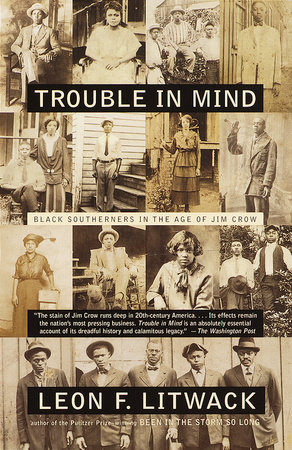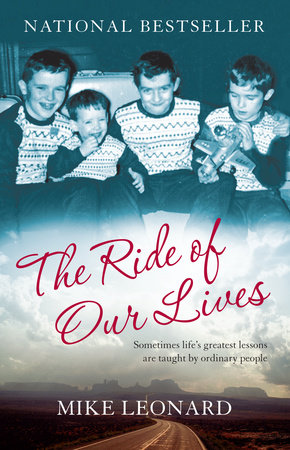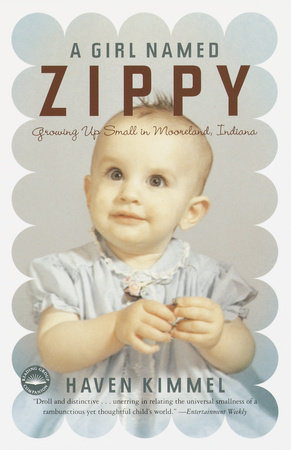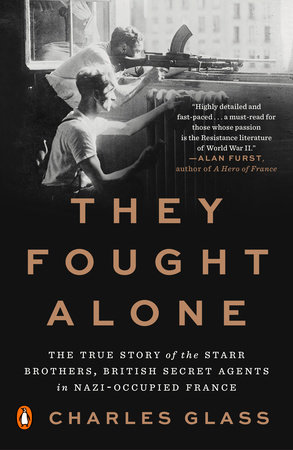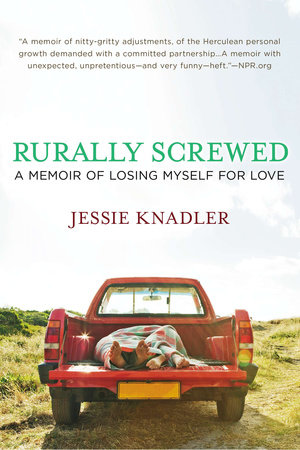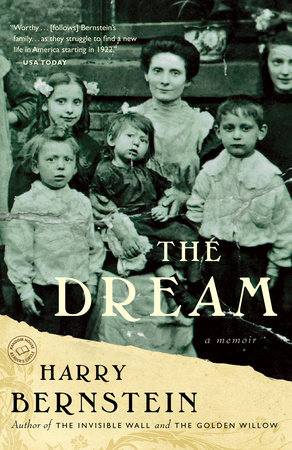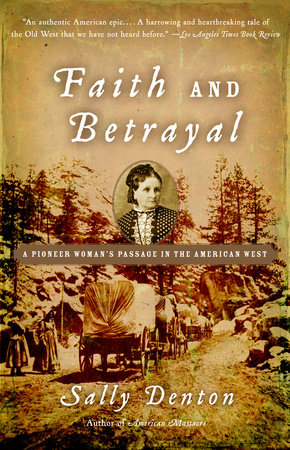Author Q&A
A Conversation with Deborah Larsen
Q: Why did you want to become a nun?
A: In 1960, the process of becoming a nun looked so exotic. I (and many other Roman Catholic young women like me) accepted the idea prevalent then that in becoming a nun–vowing poverty, chastity, and obedience–you would lead the most “perfect” Christian life possible. If you loved God, the idea of being utterly dedicated to him seemed logical. You could, then, fairly easily give up wearing sea-green taffeta prom gowns and smoking Winstons and driving around in ’59 Chevrolets with attractive, witty boys; all that seemed a little banal compared to being in a special relationship with the Lord. In the Midwest in those days you saw marriage as often dreary and could foresee how you would be mostly saddled with babies and diaper pails and furniture polish and frying pans. The alternative, being a “spinster,” and, say, working as a secretary in a hospital ward and then going home at night to cook on a hotplate, didn’t look too thrilling, either. Why not be a nun and lead an intensely spiritual life?
And if you had been taught by nuns who were super smart and savvy, you could also imagine yourself leading an intellectual life as they did and if not quite seeing the world, at least traveling around to the various schools where you might be assigned. Finally there was an aura of mystery about nuns and their sealed-off rooms where visitors were never allowed. In the book, I try to give the reader a very exact sense–lots of details–of what it is like to actually live in a convent.
It’s interesting: I’ve talked with women who are not Roman Catholic, including one woman who is Jewish, and they’ve said that they had thought about becoming nuns. So it must be a common fantasy. Did The Nun’s Story, published as a novel in the fifties and later made into a film with Audrey Hepburn, contribute to this? It certainly did for me, as The Tulip and the Pope reveals.
Q: The experiences recounted and explored in The Tulip and the Pope occurred forty years ago. What made you decide to write a memoir and why now?
A: It took me until now to fully comprehend the spiritual and psychological meaning of those early formative years. I think that’s why I am interested in historical material: I like getting a little distance on things. And all of a sudden I realized, granted my age, that part of my life had become historical material! So I went to work on that.
Also–and practically speaking–I worked mostly in poetry until the late 1990s. My life in the convent needed a roomier form: prose.
Q: You are known for your poetry and short fiction, but your novel, The White, was written around the nonfiction framework of an actual person’s life. How did that writing experience prepare you for your memoir? Was capturing your voice as a girl rather like creating that of a fictional character?
A: In writing about Mary Jemison, the central character in The White, I learned about selectivity, so as to make a character and her voice distinct. You get to know your historical character, you listen for your character, you’re busy watching as well as designing your character’s progress through various episodes; and all the while, the sum of her traits and her potential for change and so on starts–not to be too mystical about it–a kind of hum in your head.
When I was doing research for The Tulip and the Pope and writing about my life as a young nun, I began to hear what might have been pretty close to the tone, the “hum” inside the skull of the young person who was the fragile but questioning and curious me. Once I felt I had the voice, that tonality, I felt confident about proceeding with the book.
Q: You lived with fellow Sisters of Charity of the Blessed Virgin Mary (the “BVMs”) for nearly five years. Are there any common misconceptions of convent life that you hope to untangle for your readers?
A: Most people would not have guessed that some religious communities (such as the BVMs) in the 1960s could fairly be called progressive, theologically speaking, if not avant-garde. I profited greatly from that kind of exposure. Also, I am living testimony that a woman does not leave her humanity behind when she enters the convent. Some aspects of her makeup may go under ground; she may feel like a shape-shifter at times or like a robot. She may be ashamed of it. But ah, her humanity, as Bartleby’s employer might say. Thank God.
Q: Please explain the practice of Custody of the Eyes.
A: In practicing custody of the eyes in the convent, you lowered your gaze as you were, say, walking down the hall, so that you did not take in everything going on around you. Although you were supposed to watch where you stepped so you didn’t trip, you didn’t look through doorways, you didn’t gaze at people’s faces (much less into their eyes), you didn’t turn to look for the origin of a sound. The point was to keep yourself from distraction, to keep yourself “collected” as it were, to keep yourself in a meditative state.
Q: Why did you title your book The Tulip and the Pope?
A: When I was a young child I had an encounter with tulips in my Protestant neighbors’ backyard garden, the significance of which only came to me years later when I was thinking about freedom, grace, the beauty of the physical world, and approaching a loving God by means of metaphor. At the same time I was recollecting some of the more punishing aspects of the church (at the head of which is the Pope). The reader will see the results of this meditation toward the end of the book.
Q: During your time in the convent, your mother developed brain cancer and you were allowed to see her only once before she passed away. For this reason and any others, do you regret your time in the convent?
A: I do regret my absence from my mother’s side during that period of illness as well as during other, happier times in both her life and mine. As a young religious I didn‘t openly question isolation from my family during the “formation” period. I wish I had. But then I would have been a different person. Regretting in general my time in the convent would mean regretting the person I was and I don’t regret that person, although I would have done things differently had I known what I know now.
Q: Your exquisite, exact descriptions of growing in up in St. Paul in the 1950s are very vivid. With hardly any access to television and mainstream newspapers for five years, did you notice any shocking changes in the cultural landscape when you left the convent in 1965?
A: Not for some time. After all, when I left the convent in 1965 I went back to a very midwestern, very Catholic St. Paul–not to San Francisco, not to L.A., not to Boston, not even to that dangerous place, Minneapolis! I don’t honestly remember paying much attention to the media. Maybe I was still practicing custody of the eyes? Much later, the world would blow up for me. But that is another story.
Actually, the most shocking thing I read in those early days was Lady Chatterley’s Lover. I got interested, in the early chapters, in the social conditions in England. And then as I, lately out of a convent, read on–Yikes!
Q: What was at the core of your decision to leave the convent?
A: The core of my decision now looks more like a constellation than it does a single star. I’m not being coy when I say that I’d have to include the text of my book here to answer the question.
Q: Are you still a practicing member of the Roman Catholic Church?
A: If you mean that version of the Church presently dominated by a water-tight, conservative clergy-hierarchy which covers up abuses and bars certain believers from holy communion, I am not.
My faith, however, persists and has developed through hard thought, prayer, reading, and as a gift. I have continued to attend various services and have taken an active interest in the Institute for Christian and Jewish Studies in Baltimore. I’m always on the lookout for a compassionate, intelligent worship community that reaches out to those in need.
Some people say, “Once a Catholic, always a Catholic.” I think that’s nonsense. And it frightens disaffected Roman Catholics who are thinking of practicing their faith in other ways. People often need to be reassured–until they can arrive at this view for themselves–that they will not go to hell if they choose a little differently. On the contrary, choosing what is best for the expansion of their spirits, choosing in freedom, may well garner applause from someone like Christ.
Q: In 2003, you talked with several former and current BVMs when you returned to Mt. Carmel for the 200th anniversary of the order’s founding. Based on those conversations, what do you see as the future of religious life? Will there always be young women eager to be nuns?
A: The number of young women entering the convent has plummeted. But I met three women, one quite young, at Mt. Carmel who were actively considering entering. I’m not a prophet, but I think some few persons will continue to choose–and have continued to choose–this particular way of living and of serving.
